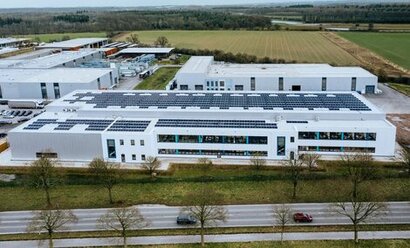
Hexagon Purus is ramping up its capacity to meet growing customer demand for hydrogen infrastructure solutions as the world transitions to clean energy sources. The existing 11,000 square metre state of the art facility in Weeze is now expanded to 16,000 square metres. The capacity expansion approximately doubles Hexagon Purus’ annual production capacity of type 4 high-pressure hydrogen infrastructure solutions.
“We are proud to open our expanded manufacturing site in Weeze, our fourth to open in the last 12 months” said Michael Kleschinski, EVP Mobility & Infrastructure. “Hydrogen storage and distribution is a vital part of the hydrogen ecosystem and has been a major growth driver for Hexagon Purus. We continue to take market share for storage and transport of hydrogen of all colours from incumbent solutions due to the competitive total cost of ownership of our Type 4 transport and storage solutions. We expect this trend to continue as green hydrogen gradually replaces grey and higher capacity improves our ability to meet growing demand.”
The opening at Weeze follows openings of new manufacturing sites for hydrogen cylinder production in Kassel (Germany) in September 2023, battery systems in Kelowna (Canada) in April 2023 and hydrogen cylinders in Westminster (Maryland, US) in January last year.
The industrial and mobility sectors are accountable for close to 50 percent of annual carbon emissions globally, and hydrogen has a significant role to play in reducing these emissions, particularly in ‘hard to abate’ sectors. Green hydrogen for use in industrial processes and mobility is widely seen as being critical to reduce carbon emissions.
As hydrogen, a key contributor to the energy transition, continues to build momentum globally, more than 30 countries have released hydrogen roadmaps. According to the Hydrogen Council, the number of announced hydrogen projects grew in 2023 by about 35 percent to over 1,400, equaling $570 billion investments. Green hydrogen is projected to supply up to 25 percent of the world's energy needs by 2050.
For additional information:

